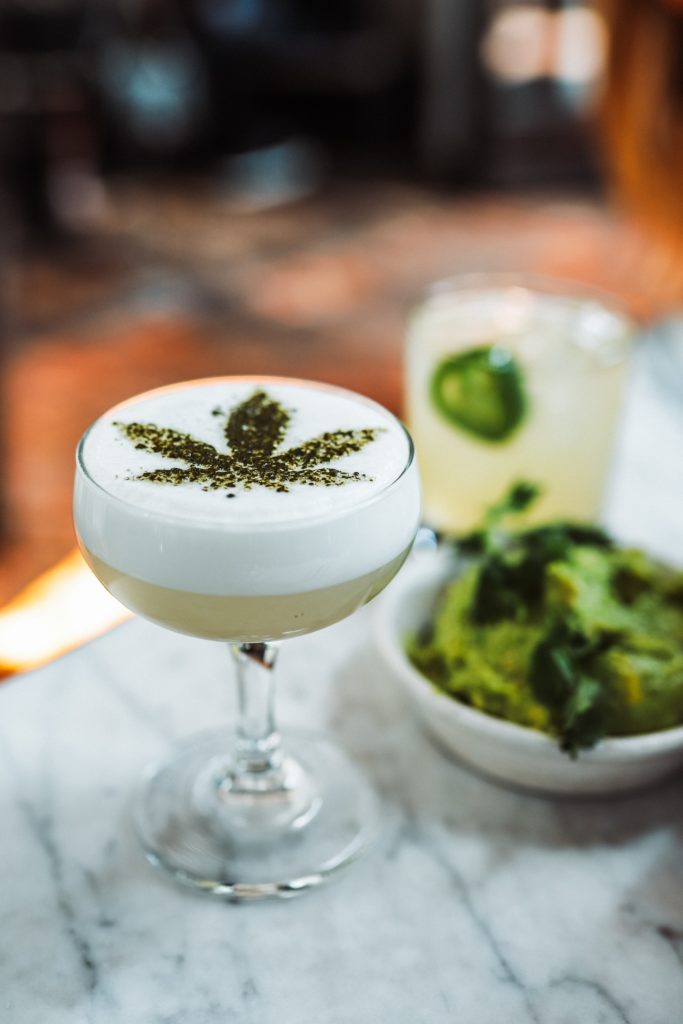All fields are required
Posted in Food Policy,Food Safety on May 27, 2018

Cannabis. Marijuana. Mary Jane.
There are several names for a plant that many people smoke and even eat. With the growing political changes in the United States, marijuana has become more and more mainstream – even inspiring cookbooks highlighting the plant as its base ingredient.
Bu marijuana is not new. And neither is its hype.
Marijuana has a long and interesting history that is far beyond the scope of this article. Its discovery and first use dates back to 6,000 BC in China for mostly medicinal purposes. The infamous “weed” made its continental North American debut in approximately 1840.
Medical marijuana is legal in 29 states, and it’s legal for adults over 21 to smoke marijuana without a doctor’s note in nine states. Marijuana for recreational use is legal in nine states. But that fact has not deterred those who wish to make an already natural substance more potent.
The Illinois Department of Health confirmed that three people in Illinois have recently died after they ingested synthetic marijuana. The deaths included a 22 year old man and the latest victim, a man in his 40’s, suffered severe bleeding before he died. One hundred and seven people in central Illinois and the Chicagoland area have experienced severe bleeding after using the synthetic marijuana.
These illnesses are not new: in 2016, over 30 people were hospitalized in New York City. The fatalities, however, are. New and more toxic chemical ingredients are being added to create this “fake weed”, and the results are deadly. And due to the proliferation of corner stores and head shops in lower income neighborhoods, this unregulated, unpredictable substance is readily available and popular in such areas. Its popularity derives from its relatively inexpensive price, e.g. an ounce of authentic marijuana can be sold on the street for up to $350, while the synthetic type sells for about $50 online or $10 per bag in corner stores.
What is Synthetic Marijuana?
Synthetic marijuana is also known as a cannabinoid because it is similar in composition to the actual marijuana plant, save for the chemicals that are added (usually sprayed on) to dry, shredded plant material. The plant material usually resembles marijuana, and it is sold with the intention of being smoked or in liquid form for vaporization.
Synthetic marijuana is also called new psychoactive substances (NPS). They are not regulated and are intended to produce the same euphoric effects as illegal drugs. Consumers believe that the ingestion of these products is safe because of their belief that that the substance is “natural”. In fact, the only natural part of synthetic marijuana is the shredded plant material. The rest are dangerous chemical additives, yet these synthetic cannabinoids are marketed to the public as a safe, legal alternative.
How Synthetic Marijuana is Used
Synthetic marijuana is commonly smoked, but users also can mix the material with real marijuana. Sometimes it is brewed as tea, or the liquid form is vaporized in e-cigarettes, also known as “vaping.”
Street Names
All recreational drugs have some sort of “street name”, and synthetic marijuana is no exception. It is most commonly known as Spice or K2. Some of the other names include:
How Synthetic Marijuana Affects the Body
The chart below, published by the Illinois Department of Health, illustrates the harmful effects of synthetic marijuana on the human body.

Short term effects include:
In addition, the use of this “fake weed” can affect the mind in the following ways:
Because of the relatively recent reappearance of this drug, the long term effects on the body are unknown to a great extent. However, long term users of the drug those have reported withdrawal symptoms such as cravings, nightmares, tremors, headaches, extreme fatigue, insomnia, diarrhea, vomiting, and neglect of personal hygiene. Its ingestion is most certainly addictive.
Personal Testimonies
The following are excerpts from the personal narratives of former users of synthetic marijuana:
The Proposed Legality of Marijuana
So, would the increased legalization of marijuana in additional states drive down the demand for this chemical imposter of marijuana? Perhaps, due to the fact that the marijuana in its natural state is a great deal less dangerous than its chemical counterpart. Of course, education, prevention and research into this drug must be part of the solution. But according to John Huffman, the chemist responsible for researching artificial ways to imitate cannabinoids, “Some people smoke [Spice] to avoid a positive drug test for marijuana – a much safer drug. This is another reason that we should be taxing and regulating marijuana, rather than criminalizing it and driving people to alternatives such as synthetic marijuana.”
By: Kerry Bazany, Contributing Writer (Non-Lawyer)